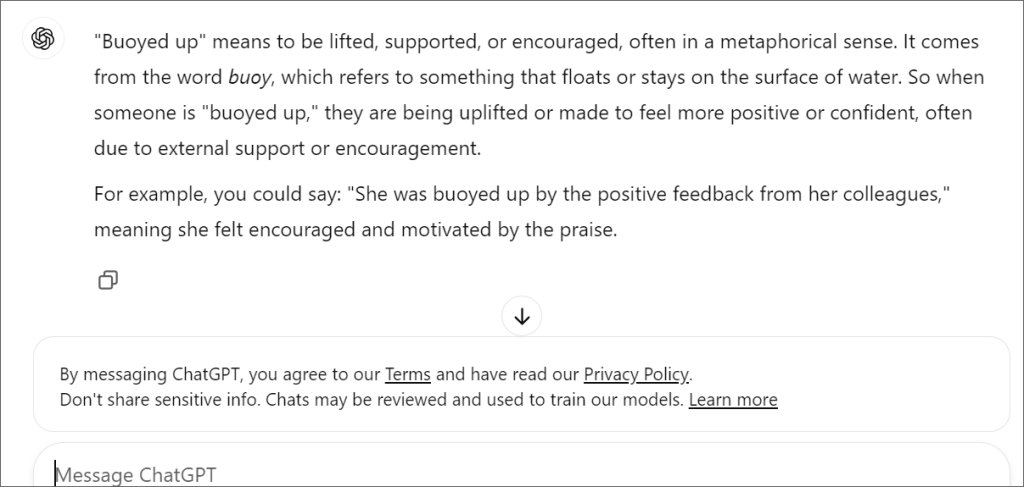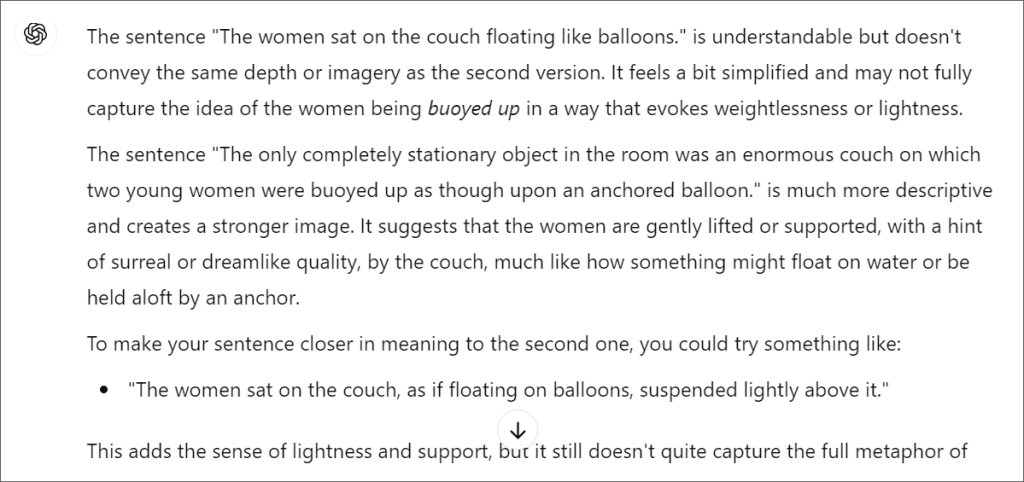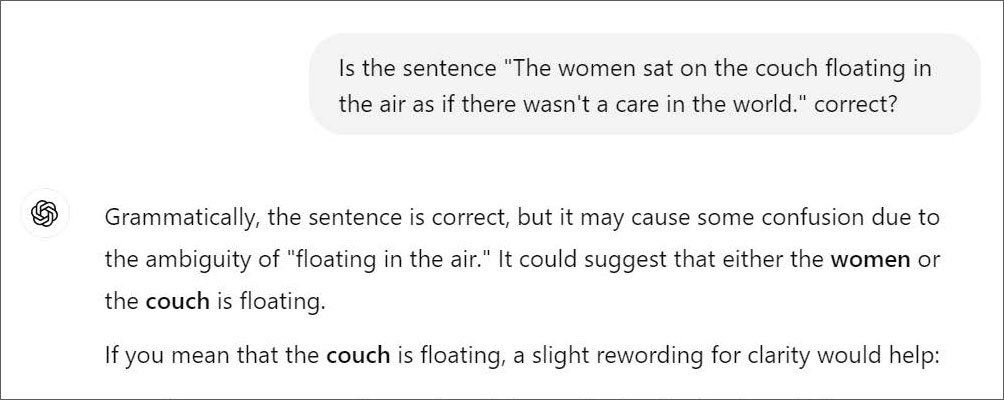Using AI to Support Multilingual Students’ Literacy Skills
When used with specific parameters, a chatbot can provide effective support if students get stuck decoding complex sentences.
Your content has been saved!
Go to My Saved Content.As English language arts teachers, we’re always trying to find ways to build student comprehension with grade-level texts in reading and listening. We’re also trying to support our students with their ability to write. A language dive is especially useful in this effort. In a language dive, we take a juicy sentence from a text and utilize it to support students’ understanding of the main ideas while they learn different types of language and ultimately model writing. One of the most challenging things about a language dive is that students may not know all of the words or concepts in the chunks they’re deconstructing.
As I’ve utilized this strategy in my classroom, I’ve noticed that students may need even more scaffolding to understand the content in the different pieces of the sentence as they deconstruct and reconstruct it.
This passage from F. Scott Fitzgerald’s The Great Gatsby inspired me to use ChatGPT to help students deconstruct sentences from complex texts: “The only completely stationary object in the room was an enormous couch on which two young women were buoyed up as though upon an anchored balloon. They were both in white, and their dresses were rippling and fluttering as if they had just been blown back in after a short flight around the house.”
Identify the Appropriate Scaffolding Tool for Your Classroom
Why is it important to understand how chat languages can be used as a scaffold for multilingual students? This is because most of the time, we can’t just give students the answer when they’re looking for meaning in content. It’s important to allow them a productive struggle—trying to problem-solve and figure it out. This is where artificial intelligence (AI) and chat languages come in. Yes, we know about using AI to make our lives easier because it helps with planning and support. However, have we thought about how to use it with students?
Before moving forward with a language dive, we can consider how students will be engaging with it. This may mean that we need to model how to do one with the class and set up appropriate boundaries for students.
- Use one AI tool as a class. I use OpenAI’s ChatGPT myself because it does very well with breaking down language. I think that Google Gemini has also been pretty helpful in working to find meaning, and it’s also adaptable if your school utilizes Google Workspace. Please be aware that students need to be 13 years old to use these tools. It’s highly recommended that you consult with your school or district leadership before utilizing any tool.
- Show how to use the tool. Demonstrate for students how they can use a chat language to support them in a language dive.
- Remind students that AI is not human and that it will make mistakes.
Model How to Use Your Selected AI Tool
So, how do we use AI to deconstruct a mentor sentence?
Before you do anything: Choose a juicy sentence that aligns with your lesson objectives. In my class, we were learning about how Fitzgerald used imagery.
Here’s the first sentence from the passage shared earlier, chunked by meaning:
“The only completely stationary object in the room / was an enormous couch on which two young women were buoyed up / as though upon an anchored balloon.”
After you’ve selected your sentence, guide your students through their own AI-assisted elaboration. Be aware that you’re going to run into the potential pitfalls of AI, like overreliance or inaccurate outputs. You will need to monitor students on their first attempt, so that you can solve these issues and ensure that their usage is appropriate and accurate. This means frequently asking students about their outputs and making recommendations for prompt engineering as you work with students.
Follow a Three-Part Approach for the Language Dive
Now you’re ready to dive into language! Here’s what to do:
1. Deconstructing. In groups of three to four, I have students deconstruct their juicy sentences in a language dive. They are each given a chunk of the sentence to determine the meaning. Then, they use their AI tool to do the following (depending on what I ask for):
- Find the meanings of words they do not know in their sentence chunk.
- Understand different types of figurative language in the sentences such as symbolism, imagery, hyperbole, metaphors.
- Ask questions about the different syntax models.
- Ask about the meaning of punctuation in a sentence.
With our sentence, we analyzed imagery in the text. There were certain words that the students didn’t understand, so they had to look them up. Here is an example of an output that we got from ChatGPT:

2. Reconstructing. Students bring their sentence chunks together to reword the sentence. Students can use AI to do the following:
- Check their sentence reconstruction.
- Find other versions of the sentence.
To check their reconstruction, students can ask ChatGPT:
Is “The women sat on the couch floating like balloons” a correct way of saying “The only completely stationary object in the room was an enormous couch on which two young women were buoyed up as though upon an anchored balloon.”?
Here is the response:

3. Writing. Next, I give students a sentence stem from the juicy sentence to write a new version of the sentence—but with a similar meaning. Students can use AI for the following:
- Helping them use clear wording in their sentence.
- Checking the accuracy of their sentence.
Here’s how to do that with their written version of the sentence:

As a class, we come together to share our reconstructions and our newly written sentences. Then, the whole class will reflect with me to discuss why the sentence is important to the meaning of the overall text or chapter of the text. Students also write about their learning in their journal. This extensive process builds a strong classroom community for multilingual learners because students feel like they can actually discuss the text with everyone else and write about it using the language from it.
Some may argue that this isn’t a great way to push students to read and comprehend a text. I’ve seen many adults use AI to write sentences, ideas, and proposals, and if we’re using it ourselves as educators, why are we trying to prevent students from using it? AI is a tool that is widely used, and in order to grow and prosper, our multilingual students need the same access that their non-multilingual peers have. By integrating AI into language dives, we not only prepare multilingual learners for academic success but also equip them with the digital literacy skills that they need for the future.
